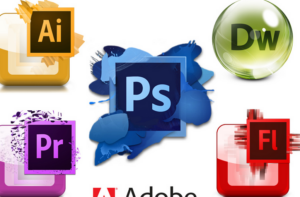Logo design is an art form that captures the essence of a brand in a visual masterpiece. Whether you’re a budding entrepreneur or a hobbyist, creating your logo can be a thrilling experience. However, to turn your vision into reality, you need the right logo design software. This guide explores the best options for beginners, ensuring your logo design journey starts on the right foot.

Adobe Illustrator
While Adobe Illustrator may seem daunting, it’s hailed as the industry standard for vector-based design. Its feature-rich environment offers endless possibilities for logo creation. As a beginner, you can start with the basics and gradually explore more advanced tools. The learning curve can be steep, but the results are worth it.
Canva
Canva is a go-to platform for novice designers. It’s user-friendly, intuitive, and offers a wide array of templates, graphics, and fonts. You can craft a logo quickly, even if you have no prior design experience. Canva ensures that your creative ideas take shape effortlessly.
Looka (formerly Logojoy)
For beginners who desire a hassle-free logo creation process, Looka is a standout choice. Powered by AI, Looka simplifies logo design. You start by answering a few questions about your brand, and it generates logo ideas based on your inputs. It’s a fantastic tool for those seeking a logo in minutes.
Wix Logo Maker
Wix Logo Maker is all about customization. It’s designed to understand your brand identity and create logos that reflect it. With a user-friendly interface, it guides beginners through the design process, offering choices for every aspect of your logo.
Hatchful by Shopify
Shopify’s Hatchful is an excellent choice for small business owners and entrepreneurs. It simplifies the logo design process by providing industry-specific templates. This tool guides beginners in selecting a style, symbols, and icons to create a logo that perfectly matches their brand.
Looka (formerly Logojoy)
For beginners who desire a hassle-free logo creation process, Looka is a standout choice. Powered by AI, Looka simplifies logo design. You start by answering a few questions about your brand, and it generates logo ideas based on your inputs. It’s a fantastic tool for those seeking a logo in minutes.
Designhill Logo Maker
Designhill Logo Maker offers a comprehensive library of icons, colors, and fonts, making it a solid choice for beginners. You can experiment with various combinations to create a unique logo that aligns with your brand’s personality.
Tailor Brands
Tailor Brands aims to provide a personal touch to logo design. It combines AI with the expertise of human designers. As a beginner, you can leverage its user-friendly platform to craft a logo that is tailor-made for your brand.
Tips and Tricks for Logo Design Success
Now that you’ve explored the best logo design software for beginners, it’s time to delve into some tips and tricks to ensure your logo design journey is successful. Here are some best practices to consider:
- Simplicity is Key: Keep your logo simple and uncluttered. A clean design is more memorable and versatile.
- Scalability Matters: Ensure your logo looks good at various sizes, from a business card to a billboard.
- Color Psychology: Understand the psychology of colors to choose the right color scheme that resonates with your brand’s message.
- Typography is Crucial: Choose fonts that match your brand’s personality, and don’t overdo it – stick to a maximum of two fonts.
- Versatility: Design a logo that works in both color and black and white.
- Unique and Memorable: Make your logo stand out in your industry, and avoid cliches or trends that might quickly become outdated.
- Feedback is Valuable: Don’t hesitate to seek feedback from colleagues, friends, or even your target audience.
Conclusion
Logo design is your brand’s visual identity, and choosing the right software is your first step on this creative journey. As a beginner, explore these logo design tools, experiment, and allow your brand’s essence to shine through. The best software for you is the one that aligns with your vision and design preferences.





